
New York City seen through the Leica M Monochrom
By Ashwin Rao – See his blog HERE
Hello, all of my photo friends. Photokina 2012 has come and gone, and it’s been a whirlwind of news from a gear front. Huge announcements have come from Sony (RX-1, A99), Canon and Nikon (with full frame entry level cameras), Fuji (XE-1), and of course Leica (with the M and M-E). In this day and age, gear gets discussed as much as the photos that it takes, and today’s glorious gear rapidly becomes yesterday’s news. So here I am, hoping that you’ll pay attention to an article about a piece of gear AND the photos that it took in my hands.
It’s easy to forget that just a short few months ago, Leica announced the much ballyhooed M Monochrom to the public, a camera of many firsts for Leica: It was the first digital black and white-only rangefinder camera. It was the first Leica digital RF camera with impressive ISO capacity expending well beyond previous ISO tolerances of digital M bodies. And with the release of this camera, public debate opened up and opinions were volleyed back and forth regarding the merits and necessities of such a device…a black and white only digital monstrosity…Why create such a camera when the Leica M9 and M8 before it are capable of wonderful B&W, further augmented by the fact that one can selectively adjust color channels to get a plentitude of B&W looks. Why lock oneself into one way of seeing? I too had many such questions as I hesitantly put in a pre-order of my MM.
Sadly, Leica has been slow to release the camera to the public. I have yet to get my own MM, due to shortages of supply here in the U.S. Thankfully, a very good friend here in Seattle was one of the first to receive a copy of this camera, and he was generous enough to lend it to me for a trip to NYC. Wow, what a friend, huh?
[ad#Adsense Blog Sq Embed Image]
As a quick aside, I wanted to thank the community here of enthusiasts for truly brightening my world with their knowledge, expertise, skills as photographers, and generosities. As I have mentioned before, one of my favorite parts of the enthusiast community is meeting so many wonderful people in the real world, and making virtual relationships on Facebook and various forums into lasting friendships in the real world. I can count so many good people as just such friends, including Steve Huff himself and so many others. It was just such a friend, whom I once knew only virtually on the forums, who has become a great friend and photo buddy in the real world, who was gracious enough to insist on lending me his $8K MM to take and shoot. So thank you, Matt D, for your generosity. You rock, my friend!
Okay, back to the essay at hand…that is, how did I find the MM in practice? In a word, “fascinating”. Exhilarating may be another word. “Challenging” may be a third…ultimately, I would suggested that the camera was thoroughly satisfying.
The MM, for those of you who don’t know, possesses a black-and-white only sensor with substantial dynamic range, particularly in the mid-tones….It forgoes the Bayer color filter array and receives its inputs directly onto it’s sensor without ever “seeing color”. In doing so, the sensor becomes more sensitive to light, and the MM has a minimum native ISO of 320 and a maximum ISO of 10,000 (higher than even the maximum ISO of 6400 with the coming Leica M)…One issue that was reported widely is that it’s quite easy for the MM to blow out highlights, which then cannot be rescued, due to lack of color channels to do so. Areas of pure highlight that show up as clipped on the MM’s histogram are truly lost, so one must care to exposure (or should I say, underexpose) to save those highlights. Beyond these subtleties, the MM’s imaging sensor is essentially the same 18 MP CCD sensor that can be found in the M9, without an AA filter. Body, build, and finish echo the M9-P, though the matte black paint job and blackened lettering lend an aura of stealth to the camera. The MM is a niche camera within a niche rangefinder market, but this niche is capable of amazing results…but if you guys are reading this, you know all of that. So how did I find the MM in practice? Much like the M9, I found it to be a thoroughly enjoyable camera to use in the real world.
First up, the challenges? Given that the MM produces a B&W representation of the captured image, it can be said to be comparable to film in the way one may consider conceiving the image or subject matter prior to even taking the image. In a sense, with the MM, color filters, famous and long used in B&W photography for the looks that they generate by selectively filtering out certain parts of the visible spectrum, become instantly relevant on the MM. This was a challenge to me, as someone who’s done most of my photography in the digital age. With the MM, I had to familiarize myself with filter choice and appropriateness. For example, Red filters often add drama to an image by darkening a blue sky and enhancing contrast, but don’t necessarily make for the best people photography. On the other hand, green and yellow filters are very nice for capturing people, but their effects on the MM’s image is much more subtle.
The second challenge to the MM comes in its sensitivity to light. The MM’s base ISO is 320, though images can be pulled digitally to ISO 160 in camera (this is a software fix, from what I have heard, similar to the ISO 80 on the M9). In broad daylight, shooting lenses such as the 35 mm or 50 mm f/1.4 Summilux Asph becomes challenging, and one must stop down. Thankfully, using color filters lessens the transmission of light through the lens, and shooting wide open may be enabled in some circumstances. Ultimately, if one chooses to work wide open with their lenses in broad daylight with the MM, a neutral density (ND) filter would be a reasonable investment. I didn’t have a ND filter for my trip, so I simply stopped down a bit when shooting…in a sense, yet another challenge, in seeing the world a different way and focusing and learning about the elements of each composition rather than simply blurring them away by shooting wide open.
The third challenge with MM comes in achieving appropriate exposure. The MM’s image carries a dramatic amount of information in the mid tones and shadows, seemingly at the sacrifice of details in the highlights. Thus, in using the camera, I tended to underexpose by 1/3 to 2/3 of a stop to attempt to save highlights. Thankfully, given the detail present in mid-tones and shadows, such adjustments come fairly easy to the MM’s files, and I was satisfied to adjust myself in this manner.
The final substantial challenge to using the M, in my eyes, was the post processing workflow. I had a preview of this challenge by editing the photos made available a few months ago by Jono Slack (for those of you who don’t know Jono or his work, you owe yourself a favor to go to his site, http://www.slack.co.uk/ , or strike up a conversation with him …he is a true gentleman-scholar in the Rangefinder community). Jono’s files showed me the tremendous detail capable of being captured by the MM. His images showed the depth of dynamic range present in the mid-tones, which provide a unique challenge on deciding how to use this information in the post processing workflow to achieve the image that you want. In a sense, the detail and dynamic range in the mid tones made available by the MM’s sensor provides the photographer with far more choice and flexibility on how to render skin tones and mid tone detail in the post-processing process. While this grayscale information yields a base MM file that can be described as flat, I found that the files are quite flexible and don’t break apart (i.e. banding, radically increased noise) that I have seen with color files from various cameras, including the M9. This process of playing with, and push/pulling mid tone details is in reality quite fun, and allows the MM shooter to envision his or her images in novel ways….
So off I was, to the streets of Manhattan, equipped with my friend’s MM. What could I achieve, using my own style of shooting and my own processing? I found, in practice, that the MM was quite fun to use. I’d typically use a yellow or green filter (green seemed to transmit less light and was preferred for broad daylight) to render people, and I’d occasionally grab a red filter to add drama to a scene. To me, it was the use of these color filters that made the biggest difference to using the MM on the streets. I could presumably use the MM without color filters, but part of the fun, for me, was to see the effects of such filters on the rendered image. Otherwise, shooting the MM encouraged me to see the street in new and exciting ways. Instead of trying to see and highlight color, I focused more on light and shadow play as well as composition. I thought more about scenes and depth of field, since the MM’s light sensitivity often necessitated stopping down (and as you all know, I enjoy shooting wide open). I thought quite a bit about preserving highlights and how to properly expose a scene in a meaningful way, so as to focus and preserve details in the areas of my particular interest. All in all, I feel that the MM provided a new challenge, one that I hadn’t experienced in many years, really since the purchase of my first rangefinder, the Leica M8.
To me, the challenges of the Leica M Monochrom represent its strengths. It forced me, in my brief 5 days with it, to see in new and creative ways. It forced more attention to detail in how I chose to compose or perceive a particular shot. In post processing, I learned much about the camera, its flexibilities, and its eccentricities, and I have found the images produced by the camera to be full of hidden treasures.
To boot, the Leica MM is a remarkable image-making machine. It captures detail in a way that I could only have dreamed previously. The detail is preserved through much of its ISO range, though personally, I’d avoid ISO’s about 6400 unless you wish a very grainy look. At base ISO through ISO 1600, the images render very cleanly and are quite flexible to post-processing and extensive pushing and pulling. At ISO 3200, the details of the images remain preserved, though noise becomes a factor, particularly if the image isn’t perfectly exposed and requires a bit of processing. At IS0 6400, the images remain useable, but noise starts to overwhelm detail. Beyond ISO 6400, I generally found the camera’s results to be unacceptable…. still, to have a camera capable of producing sharp, detailed images at up to ISO 6400, has to this point, been a dream for Leica shooters…. Kudos to Leica for making this dream a reality.
So if you wish to check out the entire set of images, including those shown here, just link over to my flickr site.
All in all, I found the Leica M Monochrom to be a fascinating experience. Will I still be getting one? You bet. I found that the camera has much to teach me yet, about how to visualize an image and focus on the core elements of the image without necessarily getting “distracted” by color. I once thought that converting a file to Black and White was an easy cheat to making an unremarkable image suddenly pleasing. This is no longer the case, as the MM is a far more challenging camera to use for the average RF shooter compared to the M9. I accept that challenge and hope to learn more….Now, if Leica could just deliver one to my dealer soon ;)….

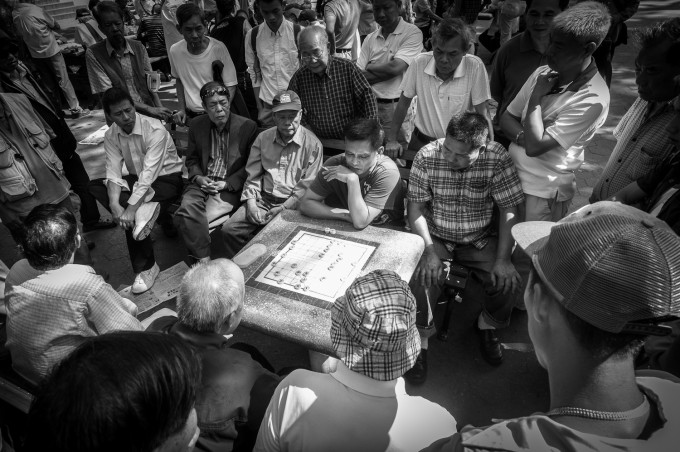
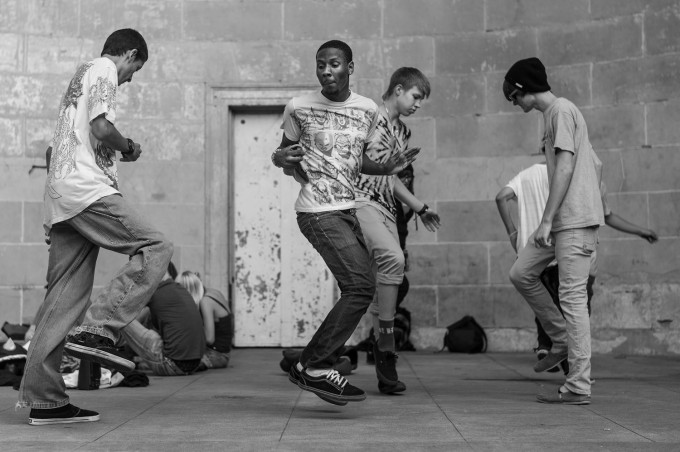
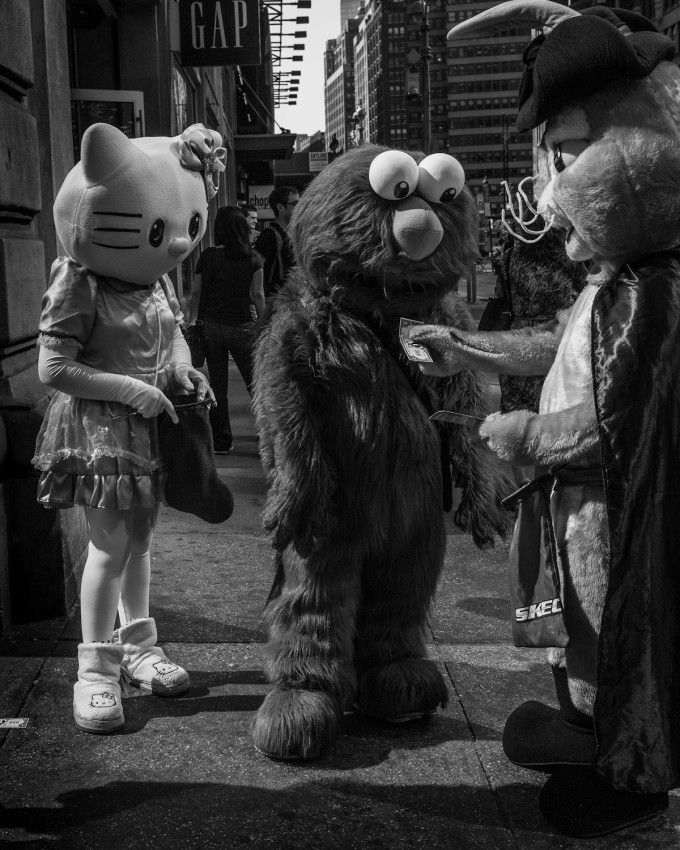
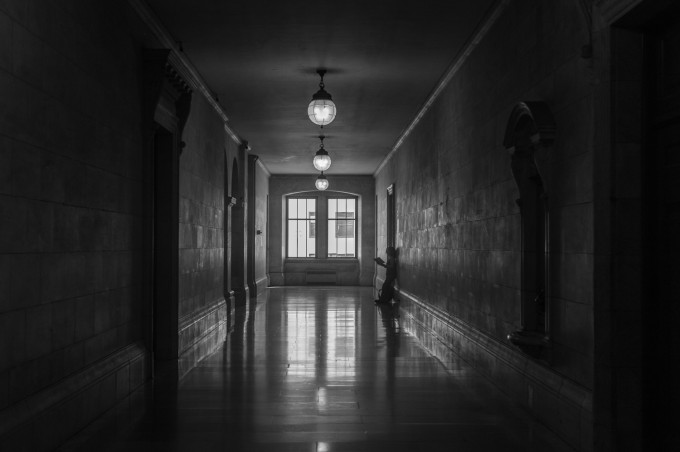
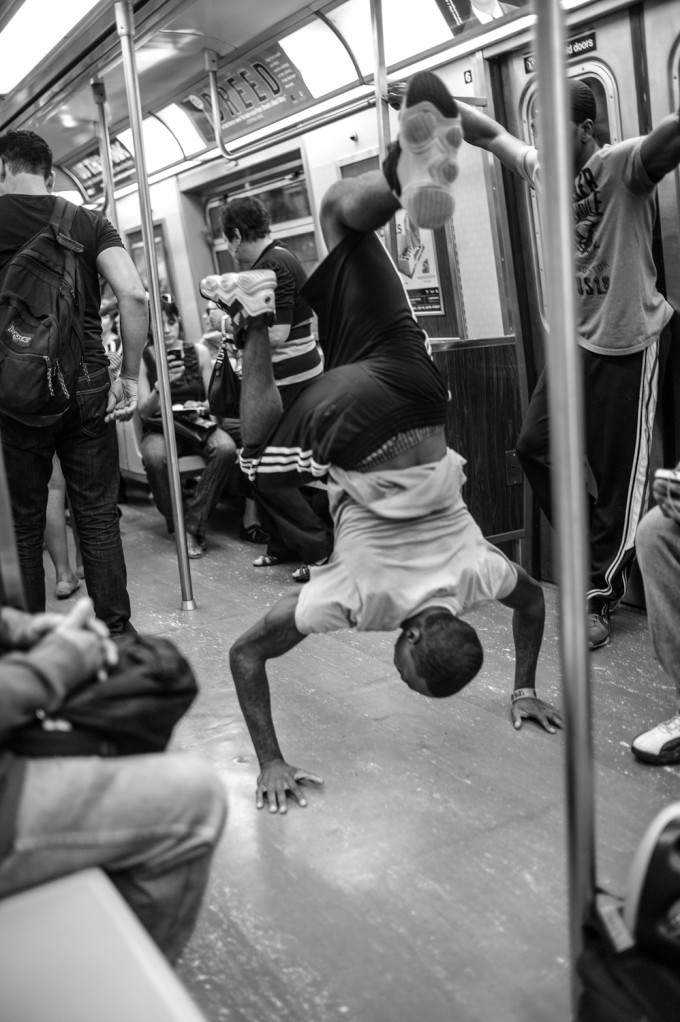

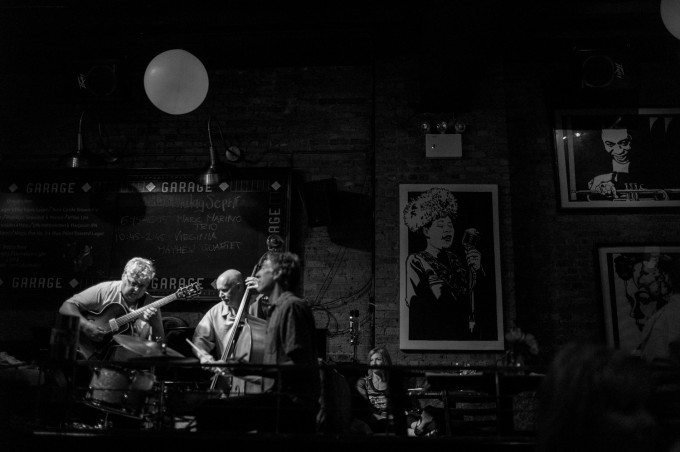
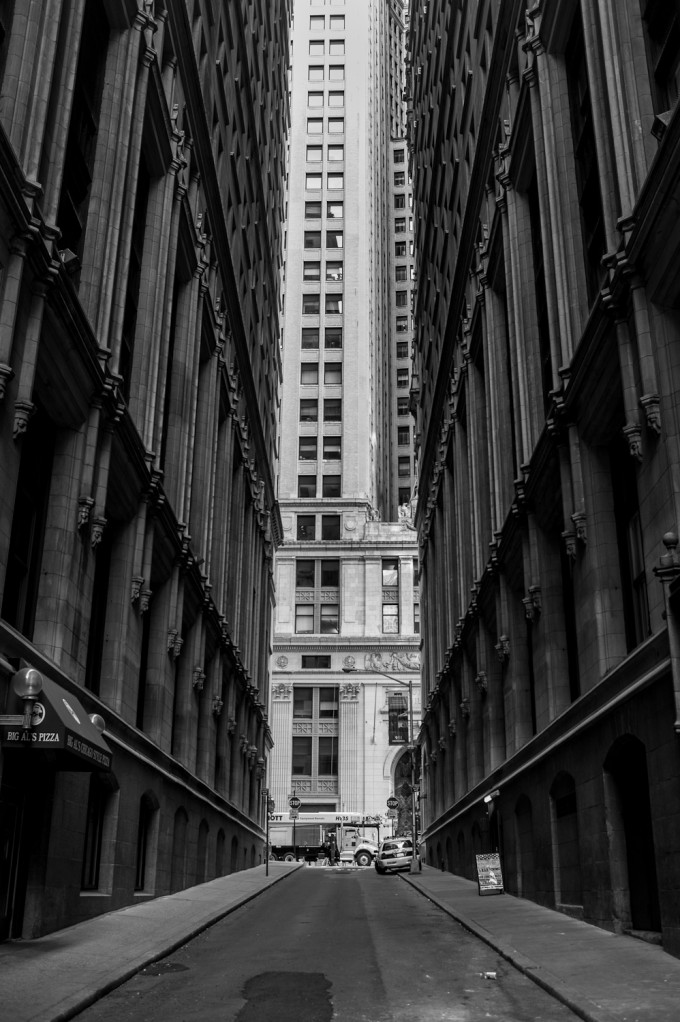
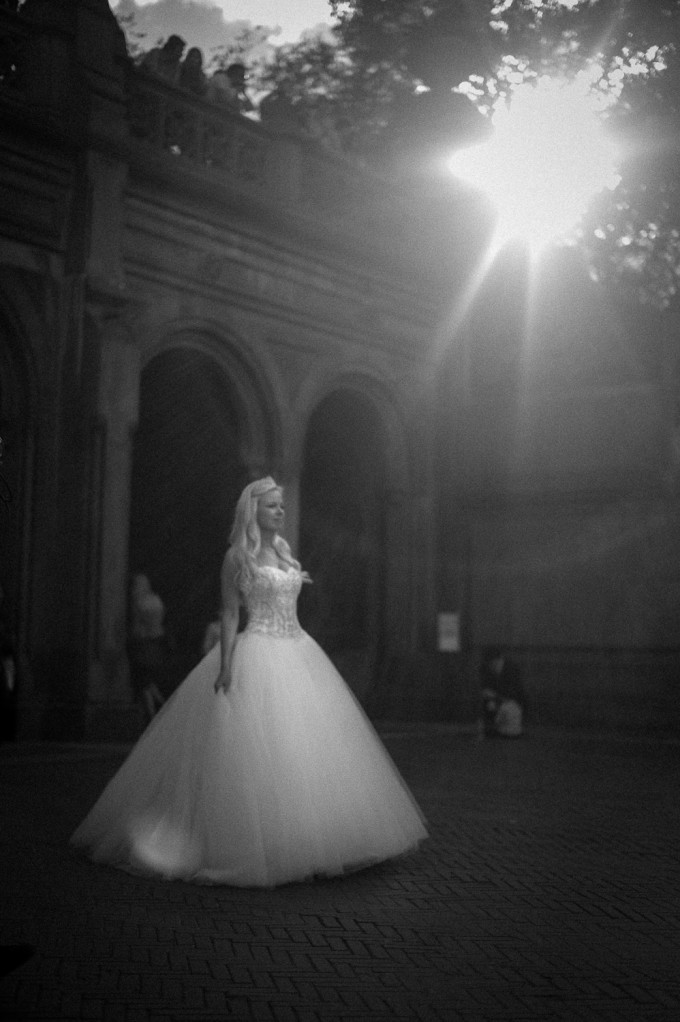
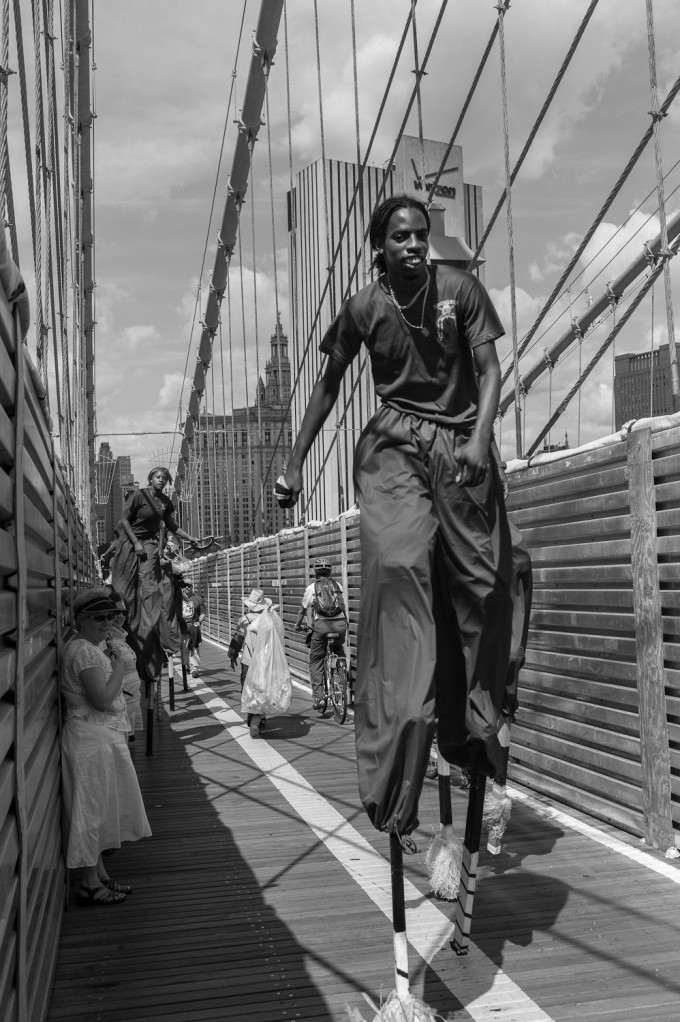
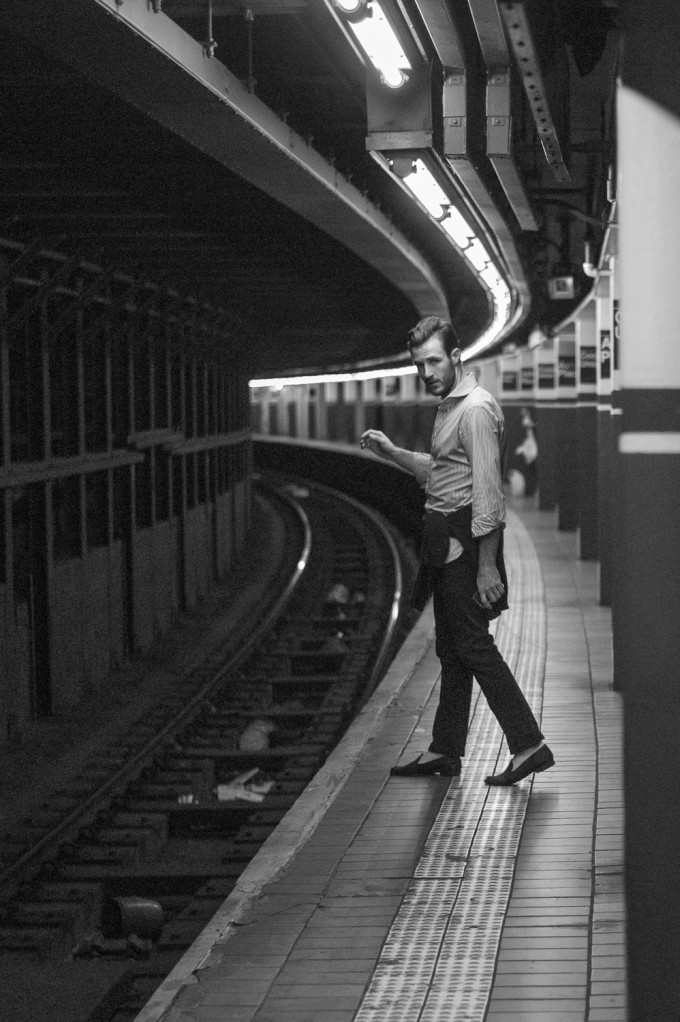
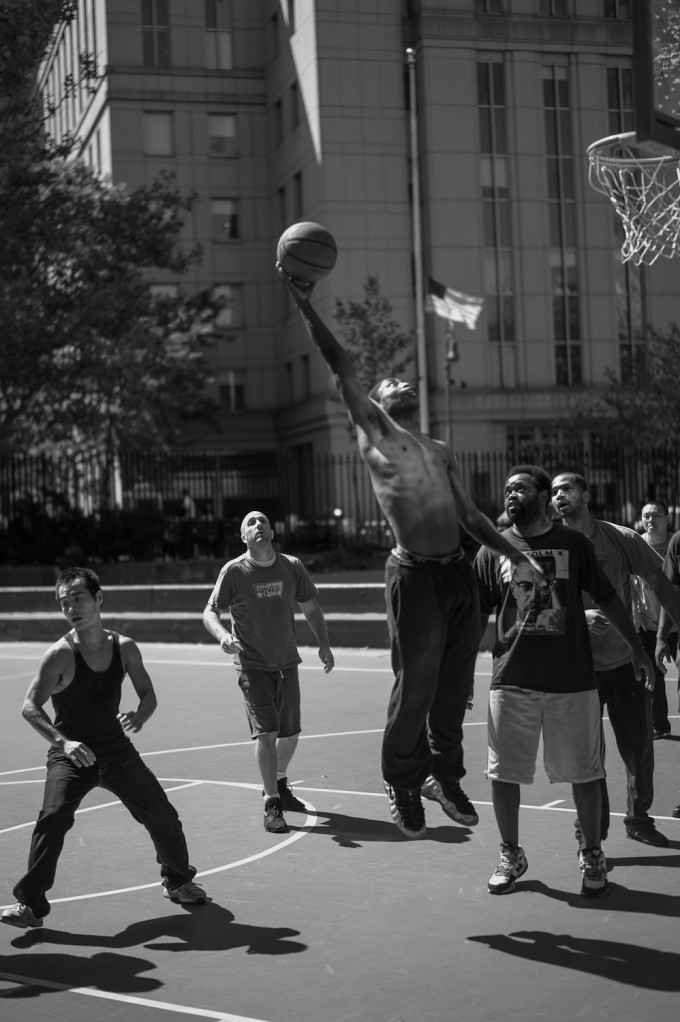
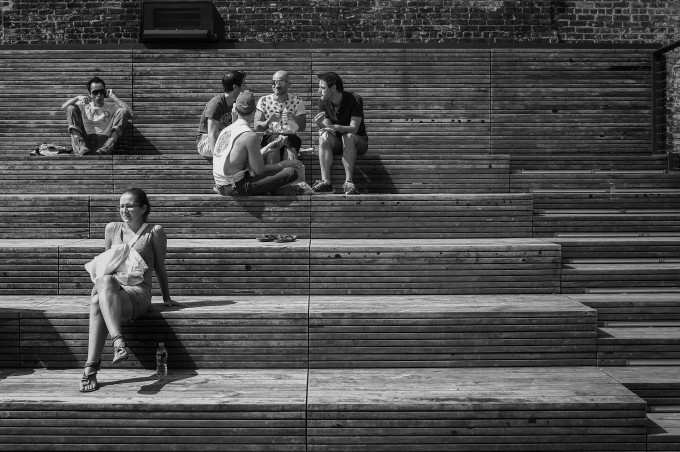
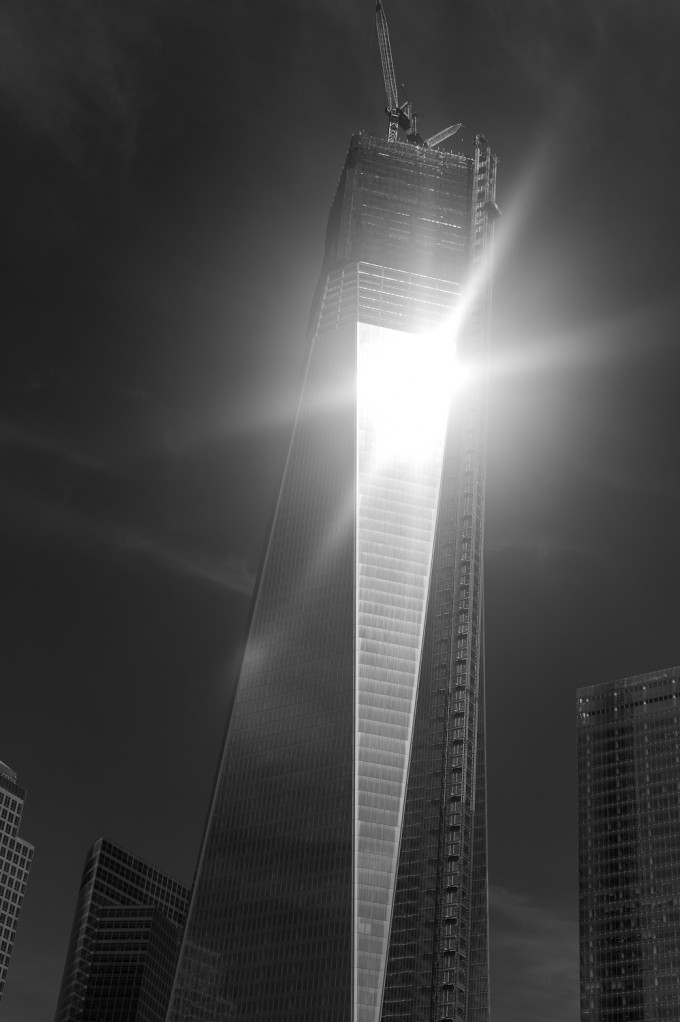
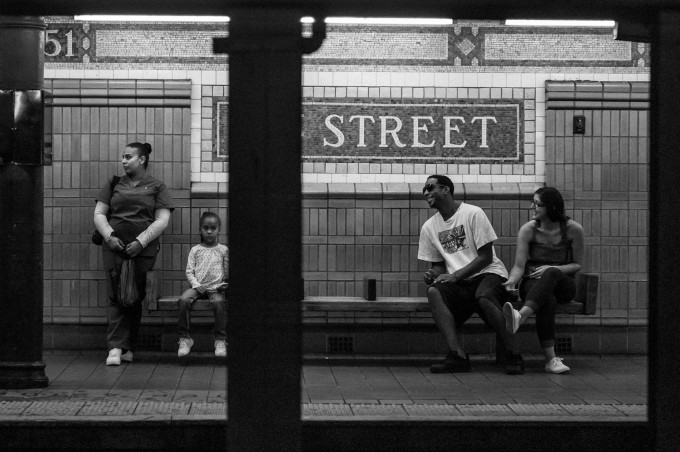

I def see the value of the MM, but I’ve always been a bit on the lunatic fringe. I’m a full time pro, and use a Hasselblad H4DII, Nikon D4’s and now the Leica’s, both the ME and the MM.
Each has it’s own purpose, and for fast moving subjects ( sports ,weddings etc the D4 is the best camera ever made IMHO) the Blad is beyond awesome for fashion and detail and resolution, and it makes 35mm DSLRS look like disposable cameras. The MM is , well, it’s hard to define but that camera with the 35mm 1.4 lux and the 50mm Summicron and the MS Optical Sonnetar 50mm 1.1 lenses produce images that transcend modern photography. Since I traffic in low light and fast glass, the high ISO’s that the MM provides combined with fast glass are perfect.
Since it’s BW I have no concerns for color. I am using all kinds of crazy lights indoors with the MM because I won’t have F’uped color that I may or may not be able to correct…
Yes, the files need work, so what? They are SUPPOSED to need work. That’s the whole point. If you want out of the camera jpgs, use an iphone on a sunny day.
I am working the MM and ME into my wedding workflow and have been both challenged and encouraged…I grew up shooting a Leica IIIc and watching B&W TV, and I think I still see compositions in B&W in my mind’s eye.. I keep my Nikon on BW preview as I find the color distracting. The biggest struggle is focusing on objects that are not still. I sit in front of the TV at night and practice focusing on faces…I’m getting pretty quick with the focus, and I feel like a kid again learning how to shoot. I love this camera more than any rig I’ve ever owned.
Sure, it’s expensive but it’s a lot less than a car and I can’t make money driving, but I do feed my family with photography.
As a black and white street photographer, I’m very impressed both with the capabilities of the MM and with Ashwin’s technique. Great shots in my opinion!
I don’t see anything wrong with any of the pictures – in fact they can be B&W HDR, over-exposed, under-exposed, IT DOESN’T MATTER!!!
That is the artists prerogative.
The content and the glimpse at life on the streets is what does and if you don’t get that, you need to go back to the film equivalent of pixel peeping…
I got my MM a few days ago right after coming out of Leica Academy B/W workshop in DC; you do not buy this camera to take pictures, you buy this camera to have a visual experience; with almost unlimited post-processing possibilities, with almost totally limited ability of a computer screen to display the nuances of the gray shades, any critique of the photographs is not fair. This is a very difficult camera to handle and it is this challenge that brings Leica aficionados their excitement. Well done Ashwin and I hope you got yours.
The shot of the girl in the ball gown/wedding dress is sublime. Phenomenal capture Ashwin. Congrats.
Loving the composition and the fact that I miss New York, but NYC is a different animal when you are a single person. I wanted to see what other people said before I commented. I’m no expert, but I see the consensus that Leica BW film has a contrastier, grittier, nastier look instead of a more clinical, almost low contrast color coverted to BW look. It may be the processing because like the old Fuji DSLRs, they can mimic the “Leica look” thru internal processing. Not a totally unique look, but like most agree, the photographer may be more important than the camera.
All these comments are inconsequential. Until you make a PRINT a picture is just a picture. BLOWN OUT HIGHLIGHTS.? Its your monitor. On prints digital and film are remarkably similar.
You got that right! Images on silly monitors are “communication”. Prints in hand are art.
@Tom: “allways wanting max. range of tones”. Maybe that’s it. But then, Ashwin told us hardly any post processing, so….
Ashwin,
thanks for the article and some great images.
I find the discussion in this article very interesting.
As an owner of the MM I also thought about “How does it compare to s/w-film? How to the M9 converted or the new M converted”
I really like the look of film and grain can be beautiful. So I would say for sure the MM files do not look like film, at least not like 35mm film (where one can see the grain in prints) because it doesnt show grain. This can be an advantage or disadvantage, depending on subject and depending on taste, and also depending how large you want to print. I guess many will disagree but I find adding a little bit of “artificial” grain in LR doesnt look that much different though.
Film looks great, but the question is if one wants to shoot film. I would like to but I have limited time and many of my films stay undevelopped for long time, and only very few images get scanned and printed. So for me it is mainly digital.
I understand much of the critism is about the MM-files being too “clean/perfect/cold/…”. I think this is also caused because in digital age many post process the images very carefully, instead of giving the images a powerfull contrasty look. For my taste we avoid black and white too much allways wanting max. range of tones.
The MM allows us to pp both ways, depending on the taste of the photographer.
After 2 weeks I am not sure if the MM allows really “better” IQ or tonality than a converted M9 file. I think yes but I am not sure and the difference would be subtile if both files are processed by experienced photographer.
I do know however that the restriction to shoot only b&w, the simplicity of the MM and working with filter like years ago is a lot of fun for me and made me thinking more about b&w, light, forms, contrast, tones than I did the years before. I also feel this a camera I will keep long time and which is “free” from the lates&gratest race. One can say the price is very high, but I can honestly say that I enjoy this camera a lot.
Regards, Tom
Ashwin, thank you so much for this enjoyable set and informative write-up. I really liked the penultimate one, as well as ‘Metro loafers’ and ‘Child with dog’.
For what it’s worth (probably very little), some of the others kind of made me wonder: is B&W always the better way to capture a scene? Those shots brought back memories of an experiment I did some time ago where I simply set my compact camera to B&W mode, this way showing a completely desaturated continuous live-view image, and only taking monochrome pictures. It struck me how many images that would have worked quite well in colour ended up as indistinct mixtures of shades of grey. It taught me how much of a challenge it is to get the elements that make up a composition, really stand out against each other when lighter and darker are the only variations you have. Even after having learned about colour filtering, channel mixing, dodging and burning, I often find myself reaching the conclusion that not every picture can be improved by removing its colours as a first step.
Especially with ‘Elmo et al.’ and ‘Ronaldinho’, but also to a certain extent ‘Basketballers’ and ‘Breakdancers’, I thought to be noticing a look that I see myself when doing a B&W conversion I end up undoing. To be perfectly honest, supposed there’s a grain of validity in this observation, I’m not sure if it would be fair to blame the Monochrom for this. Also, in that case I’m not entirely convinced that shooting film would be the answer to it.
Please don’t get me wrong, I really did enjoy the other shots as well. They all show a great eye for composition and splendid timing. It’s only that they made me wonder if some of them would have worked better in colour?
I honestly cannot see the point of the Leica M Monochrom. Digital B&W is poor enough, but at least you have the option of converting after the fact and producing the conversion based on specific colour channels; in essence, carrying an infinite number of colour filters around with you at all times. With digital B&W, you trade off some image quality (and especially dynamic range) for convenience.
But the M-M eschews all of this, and gives you a panchromatic B&W image; you get all of the limitations of film, with none of the advantages. To be completely honest with you, the B&W in the images above is not at all appealing to me. It’s completely sterile, lacking both the character of a nice B&W emulsion like Tri-X and the flexibility of a conversion from RGB.
A near-mint condition M6 is $1900, tops, while an M-M is $8000. Take the extra $6000 and buy $500 worth of filters (a red, yellow, and orange, and one or two NDs of different strengths), $100 of darkroom equipment, a $400 Plustek scanner, and $5000 worth of Tri-X (36,000 exposures at $5 per roll), and you’ll have images with excellent highlight retention and good shadow detail (especially if you expose for the shadows), that will look far better than the images posted above (note: that’s not a comment on the compositions, just on the appearance).
Print some photos taken with the Monochrom Leica and put them next to film prints of the same subject taken with an M6, M4 etc. Then one can talk about the fors and the againsts of digital technology. The rest is futile talk. I have seen lots of pics by the MM on the internet and they all look fantastic but “plastic”! An honest effort by Leica but there is more to photography than high sharpness or high ISO performance. I use an M3 for B&W and an M8 for color. Problem solved.
Ash, I know you to be a capable photographer and looked forward to reading this article. Jono Slack did us a great service by providing early Raw files, but his limitations as a photographer undermined the value of those images as evidence of what it’s capable of.
Conversely, your images here are excellent. However life is too short to be left with the feeling that an image would be better taken with another camera, another medium and I fear that I’d be left thinking that captured images would always be disappointing. A Canon Ixus, or an iPhone might do the basic job, but ambitions fall apart when trying to do whatever with the image.
Don’t you feel that the camera/technology has let you down, will restrict your opportunities and most important waste your time ? You could produce so much better than what you show here. The results can’t compete with a roll of film and I’ve yet to see anything that matches output from the M9. These blog posts will suck in photographers that don’t have the skills to process the images, so it’s very important that critique is added, even though it seems harsh at times.
If I can give you a golden nugget of advice – cancel your order now. It’ll waste your time if you take ownership.
In my very humble opinion, I think that the main problem in these pictures is not the photographer’s eye (a couple of those are spectacular: the guy in the subway is pure Winogrand), but the way they look. I don’t know if it is due to the camera, the lens, or the postproduction process, but, generally speaking, they look too “cold”, with too little contrast, not lively enough. I wonder if, coupled with a pre-aspherical lens, the MM would give different results.
I expect if digital came first, and film was only recently invented as a breakthrough, many of us would be saying, “it just doesn’t live up the the magic of digital, way too harsh…” and so forth. I enjoy both, and never try to classify a photo as derived from digital or film. When a photo strikes me between the eyes, and my heart races, voila’! Thanks so much for having the courage and taking the time to “expose” yourself by sharing a wonderful set of photos in my Manhattan, taken with a camera you only had for 5 days, a camera that will no doubt add to our art as we engage with it. Mine is on order, and I await like a impatient dog for his master.
I couldn’t agree more! It’s all about the photo. Sometimes it’s composition, sometimes the light, ideally both and the stimulation it provides. We get lots of fsntastic images on DSLRs, RF, our phones, SLRs, etc, etc…..
Great story telling Ash……
Absolutely correct, Michael. I don’t think that the MM would be the camera for everyone. In fact, I think it’s the right camera for a select few photographers. I enjoyed the experience and the look, but see now how others may not like it’s more varnished presentation of the image (certainly that most standard ISO 400 films, at least).
Nice article where can I buy the Monochrome
I see that my first post was deleted. Too bad. After all this time I thought the site was growing into something more. But I’m wrong. Careful — dare I say accurate — reading of my observations had absolutely nothing to do with Ashwin or his work. It had everything to do with the contradictions of “this is the best camera I’ve ever used” becoming a meaningless phrase, etc.
I do appreciate, SH, the work that goes into this effort, but it does get tedious when, wanting to learn, I find little other than adulation. You once wrote a very tender, meaningful and heartfelt letter on how losing everything made you better. And I was intrigued to see the evolution in your work and reviews grow even further. But, as I implied in my earlier deleted post, it seems you have gone backwards. The reviews are more off-the-cuff, lacking depth and therefore any real meaning.
Again, this is NOT a criticism of any one person, it is just a need I had to convey how reading ANY photo site is dull unless there’s real advice, real reviews and tolerance. I am just disappointed. I wish you nothing but success and love in your life. You have much to be thankful for.
Perhaps I’m not the kind of person for blogs. I expect them to be meaningful, informative and accurate, and, when appropriate, full of wit and passion for the craft or news or whatever the blog is supposed to be about. At this juncture it seems little more than a shortcut to vendors.
For the photographers that can and will use whatever it takes to create their vision, I am most thankful. I find real praise and critical thought expressed by some, and the occasional vacuous “haters gonna hate” comment with no real response to what I was trying to say in the first place. Please feel free to keep this post to yourself, or just edit out that last line. It is sincere, well intentioned and authentic.
Just as an aside, I’m an artist. I have a real passion for abstract art. But, like I always say, you can be the finest technical artist in the world and not have an original thought in your head. That’s why I appreciate real content and abhor overly sensitive comments, or in this case, deleting what was simply one person’s view. I’m sorry if it threatened your livelihood. I would not intentionally do that to anyone.
Make prints as big as you like, the digital, sanitized look, incredible detail and all, will always be there.
I think we should all be grateful for Aswin’s contribution here, because it enables us to see what the M M does (he’s a capable photographer), and form our own opinion. Thanks Aswin.
Ashwin
Thanks for the article. The MM divides even the Leica community so I am not surprised by the variety of opinions. I enjoyed your photographs; you clearly are a first class photographer. Those that try to assess this camera on the basis of web samples can be forgiven for being underwhelmed. It’s only when seen at 100% that the potential starts to be appreciated. I suspect it will require large quality prints to show it’s true value. Those who attended the launch will, I believe, confirm that statement. In that regard this camera will be a challenge even to the best photographer. For mere mortals such as myself it is indeed daunting. Yet producing high quality 16×12 B&W prints through wet processes was no less daunting and required some dedication. Anyone focusing on web images should probably look elsewhere. I’d welcome a MM community which aims to focus on fine prints. For me that is a major hill to climb but one Ibwould thoroughly enjoy.
you have actually touched on a very important subject; i was just talking about it the other day with a friend, while we were looking at some prints i had just made from some recent photographs, and realized that there is NO other way to look at and fully appreciate the quality of an image.
yes, a picture online or on any screen can look good, but if one really wants to appreciate what photography is all about, one should look at PRINTS!
Aswin,
the best part of these blogs is that one can get to see -sometimes- great work shared by others, and for this i thank you.
the worst part is that such blogs seem to attract a multitude of ‘internet experts’, who somehow think that they are entitled to dissect and criticize left and right, spewing their infinite wisdom, and that is why i rarely comment on these blogs.
i too was very intrigued by the announcement of the Monochrom, and excited about its potential; the first sets published on the Leica sites left me lukewarm at best; much ado about nothing, i thought, perhaps we do not need this Monochrom after all.
however, a couple of more recent posts, yours included, are convincing me more and more that this is probably the most interesting digital camera made to date.
unfortunately its price makes it not easily attainable, but who knows … for now, i will keep shooting colour – and b&w too – with the M8, and exclusively b&w, tri-x film, on my M4, until the day i will be able to ‘pull the plug’.
again, thank you so much for sharing, and i hope you will take all those negative criticism for what they are worth (= 0)
s
so sorry about the typo, i meant Ashwin, of course! 🙂
Technical matters aside, the Monochrom photos show us something in you not very obvious from other work. This is a tough distinction to make, but these b/w images are energetic and soulful, daring and sweet–and less cool and intellectual than your other work. It’s not just that you’re capturing the spunk of NY, but that perhaps the camera is evoking a deeper response in you: maybe the way you really see the world. Lovely pictures.
Hey guys..well, being a devoted film shooter, I did break down and bought a Monochrom. I just had to know what it is about. First of all, I was never a fan of the M9. It was not the camera, per se, but I simply don’t enjoy the digital workflow for a number of reasons. The final product for me is a good analogue b&w print, and I was never sold on the M9 (or any other digital camera) when it came to converting and getting the same great output on paper as I get using Tri-X, or APX100. So, what about the Monochrom? Well, Ashwin made some great points here, and it is a camera that will require a bit of a different approach. For me, it feels a lot more natural, because I shoot film all the time. Not seeing color, or having to convert, removes a bunch of steps, while also giving an out of camera result that is very much like film (more like TMX or Delta 100, or APX25 processed in fine grain developers). The few things that people seem to moan about are dynamic range and exposure. First of all, yes, Tri-X will give you a lot more dynamic range and it will handle over-exposure without issues. It doesn’t mean that your life is made any easier, because to fit 9 stops of DR to 5 stops on silver gelatin paper still requires darkroom somersaults that are not necessarily easy or fun. The truth is that the Monochrom will capture most situations without problems, but attention needs to be paid to exposure. An incident meter really is your best friend here. Exposing with the in camera meter in tricky situations may not be the answer. Lost highlights are not always problem but it is the rendering of those highlights that is a concern. If there is no important detail in highlights, then there is not much to worry about. The problem is that blown digital highlights, and the inherent transitions between those and darker values, always look like crap, where film is much more organic, smooth, and not bothersome.
Well, the good news is that with the Monochrom, I’m noticing that lost highlights are much easier on the eyes than I was expecting. Not quite like film but close enough. The answer to all of this is: expose properly. Under-exposing will save your ass in certain situations, as there is a good amount of information to extracted from mid-tones and shadows, but also some noise. It really is a fine line. Here is an image where the scene had an SBR (subject brightness range) of 8 (high contrast). I wanted to retain full detail in all highlights but didn’t want anything blocked up in the shadows. Exposing with an incident meter, where the dome was 3/4 illuminated by the full sun, and 1/4 in shadow, gave me perfect exposure. http://www.facebook.com/photo.php?fbid=4609595086250&set=a.4545649647654.181429.1483677496&type=1&theater¬if_t=like
In post processing, all I to do was very minimal and this is the beauty of this camera, and good exposures. I find that post-processing needed is minimal. Images look great straight out of camera. Of course, you can go crazy as you wish with Silver Efex but I believe that a good image should require the bare essentials to be effective, as long as tonal values are correct. Also, that image was shot with an old Summitar, which tends to open shadows a bit more and it’s a good choice in high contrast situations.
It is also important not to get hung up on minutia and bashing a camera for things that it does not do and are not always important. If you are shooting portraits in shade, skin tones and proper exposures for that will be paramount. Backgrounds will be blown and that’s okay. Even with film, trying to capture an entire range in those situations is just silly and pointless. Now, inside/outside shots are a different issue and film will always win there. If you need to capture clean and full shadow detail in an interior, with full detail outside, then you will have to expose and develop properly a nice sheet of Tmax400. No digital camera will render those ultra-high contrast situations properly. All in all, the Monochrom is a fantastic camera that will appeal to those who shoot only black & white and want great looking files that do not require extensive manipulation to look great. Comparing with film may be fun but what’s the point? If you like the look of film, shoot film. Argue about which is better or worse, leaves us with less time to make good art. 🙂
Best,
Max
Max, your facebook Links don’t seem to work.
Hi there…seems to work for me. Maybe because we need to be “friends”? Not very proficient on FB but that’s likely the case.
Nice to see you around again Max. Any chance of a few more articles from you in the future? Really enjoyed reading them in the past.
No, I agree totally with what you are saying too re: portraits & blown backgrounds/highlights. No way to account for that whatever you use of course. Also as regards comparing film v digital I think (for me it is) it’s more in the price difference i.e. £800 for an M6 v £6100 for an MM and the end result not being any better, makes no sense to me but each to their own obviously. 🙂
I’m a bit of a latecomer to shooting Tmax 400 as I’ve never shot it before, one of the very few B&W films I’ve never tried. I will rectify that tomorrow though as I’ve bought my first roll. Been fairly happy shooting Foma 400 of late and at 1/2 the price of Tri-X I’m pretty happy indeed.
Same here, my friend. Articles…would love to, but it’s a time issue. Not much left at the end of the day, but I will try. I hear you about price differences. Of course, any decent film camera with a good lens will give good results, for a lot less than a Monochrom. It really comes down to mathematics, unless one has such disposable income that it just doesn’t matter. Film is not cheap when factoring the reality that a good photographer is likely to get 1-2 keepers for a roll of 36 and the rest is waste. With digital, it is just “delete”..although $8K will buy lots of Tri-X and plenty of chemicals to last a while 🙂 Yep..to each their own in the end. For me, I will only keep the Monochrom if I can get results that will translate into sold prints and new exciting projects to justify its cost. If not, off it goes. Don’t need another camera, as great as it may be.
Max, I’d love to see another article, or two, and am looking forward to a work in progress article you mentioned to me once.
About Film being expensive – sure, for a pro it is, as a Pro needs to shoot shoot and then some for a living, and if I were a Pro (never will be) I’d shoot digital first and foremost and a little bit of Film here and there for the odd shot.
But an amateur or enthusiast or hobbyist who shoots once in a blue moon ( a day off from work, a Holiday or day trip) and only a few rolls, it isn’t expensive at all. I tend to get say 30 keepers out of 36 in 35mm and around 10 out of 12 in a roll of 120 (6×6) as i’m very careful and only trip the shutter when i’m certain (most of the time) (obviously, a keeper to me might be total pants to another, but ultimately I shoot for my own pleasure so me no care) And I cannot see many pro’s requiring what the Leica MM has to offer – which kind of pro is going to shoot with that? someone enlighten me, as a Pro, to my knowledge is a person whose main (if not sole) occupation is full Time Photographer and s/he makes his or her living by this.
And looking at what the Leica MM has to offer, experienced photographers will get much the same result (to all intents and purposes) with any decent digital or Film camera – I see the MM as a boutique camera for people with deep pockets,and if you can afford the luxury, go for it, and sure, it may possibly give a slight edge in quality over a comparable camera (relatively)
And Max, just curious, Why do you need a Leica MM?
Anyway, ultimately, it is a nice camera and produces nice results, it’s expensive, but that’s leica for you – do you get what you pay for in this case? mmmm, the jury is out on that one, and I have concluded that persons like me, who cannot or would rather not justify the outlay, and aren’t entirely impressed with the results should just shut up and browse elsewhere – so no more about the MM from me from now on, though I am curious to know why you need this camera, rather than sticking with what you already have – mathematics?
Ha..well, let’s get one thought out of the way…nobody “needs” anything! 🙂 Some of my best selling prints (and I underscore PRINTS), have been from my $50 plastic piece of crap Holga. I am a b&w shooter and a darkroom rat and I literally cannot stand digital post processing. The appeal of the Monochrom is, for me, the fact that 1)There is no color distraction. 2) There are less steps involved in post processing. 3) The files look great with very minimal post processing. 4) Of course it is a Leica M and it’s easy to use. Do I need it? Of course not. It’s just another tool that allows me to do something different. Right now, I am doing copper plate photogravure, and I have a project in mind that will marry the MM with one of the earliest and, to this day, most beautiful and complex of all photographic processes. The prints will be absolutely beautiful. In the end, it is all about THE PRINT. It is funny how 99.99% of people on the internet have fun discussing and bashing film and/or digital, their faults and virtues, but have never held in their hands a beautiful platinum, silver gelatin or gravure print from either medium. It’s all pixel peeping crap on a tiny screen, which shows us absolutely nothing. A walk into a museum or gallery, buying a few prints, is a much better exercise and I highly recommend it.
Like I said before, the Leica MM is a great tool, with a price tag that, for me, is only justifiable if I can produce some meaningful art with it. In the end, it is just another camera.
Well said Max!
Copper plate’s are absolutely gorgeous, I’ve never handled one but have seen and admired a few.
I’m even more in love with Platinum prints though – a few months back Black and White photography magazine had a section on the work of this documentary photographer who had photographed outer Mongolia with a mamiya 7 and had made platinum prints of his absolutely stunning work – and these platinum prints were merely reproductions in a magazine of the originals and still they were beautiful. Here’s the back issue;
http://www.thegmcgroup.com/pc/viewPrd.asp?idproduct=4632&idcategory=699
Check it out. And you can find them on his site;
http://www.hamidsardar.com/
let me know what you think.
Ps. Why a MM Max? And not, say a normal 35mm M or even a Mamiya 7 or such?
Hey Ibraar..Platinum prints are indeed gorgeous, but they are more like painting by numbers. Copper plate gravure is a very involved process with so manh variables that in the end brings a real joy and sense of accomplishment….for me anyway 🙂
Why not a normal 35mm or Mamiya 7? No, I don’t need another film camera..and like I said, I really don’t need anymore cameras in general. The MM has the appeal of being different and also challenging. It’s just a slightly different tool that may or may not fulfill its usefulness…we shall see 🙂
Hope you are doing well my friend!
Max
Cidereye – have you tried any of Rollei’s emulsions? They’re great value and are actually bona fide Agfa. RPX 400 is very nice.
No Ibraar, I’ve used a fair bit of the original Agfa emulsions some years ago though.
I was tempted to buy some on a recent visit to Silverprint but the incredibly low price of the Fomapan film had me filling my bag up with as much as I could carry. Haha. Very flexible film to exposure wise. According to their data:-
“FOMAPAN 400 Action has a nominal speed rating of ISO 400/27°, but due to its wide exposure latitude the film gives good results even when overexposed by 1
EV (exposure value) (as ISO 200/24°) or underexposed by 2 EV (as ISO 1600/33°) without any change in processing, i.e. without lengthening the development time or increasing the temperature of the developer used.”
Not tested this out yet to the full though but will be interested to see how well it does cope.
Have you ever shopped at West End Camera’s in Tottenham Court Road? Their prices are very good. they sell the Formapan (and Rollei and Efke etc)
And where do you get your C41 and E6 developed?
I use Forest photographic in Walthamstow, they dev only for £4.99 (120 and 35mm) and add £2.00 for a CD with high res Frontier scans!
Their website is;
http://www.forestphotographic.co.uk/
But I think their prices are actually lower than this.
http://www.ebay.co.uk/itm/Jupiter-50mm-f-1-5-Sonnar-copy-Leica-L39-mount-50-F1-5-made-in-Russia-/310350888922?pt=Camera_Lenses&hash=item48425abfda&_uhb=1
Here it is Ash 1952 Jupiter3 50/.1.5
(Later versions eg 1955-64 are half the price, early 50s are supposed to be the gems).
Wooo, cool lens!
@Michiel: That’s a good analogic way to put it. The more I see these photographs, the more I feel something playing with my brain and my perception in a somehow unnatural way.
@jj: I do grasp what you’re saying, and see the “extra”/”missing” tones, too. All quite valid, I’m sure, and 100% “correct” for you, where “you” encompasses your photography background, painting, video, etc. AND your taste.
I, well, choose to approach each of these images “on their own terms”, and not as a film shooter, which in a way, wouldn’t be fair … for ME to do. I treat it as a different genre, something to be pondered, played with, liked, disliked, etc., just like any other. Ha, ha, ha – that approach might be a tad simplistic, or “intentionally lobotomized”, or a cop out, but hey, sometimes, I just want to sit back and enjoy it with as much of an attempt at getting into the skin of the artist as I can muster, without “comparison”.
Gosh, it would be horrible if we all had an identical approach to these, or any, photographs, wouldn’t it?! Still, I did enjoy reading about your point of view AND the rather clear way you expressed it!
Cheers!
—gerry
You are not far from the truth. In fact, what you are basically saying is that the photos from the MM are TOO SHARP. So sharp that every portion of every corner of the photo leaps out and grabs you for attention. That’s what happens when users ask for sensors with more and more resolving power and lenses with more and more resolving power. Your m3 will look different because film does not have such resolving power, and the irregularity of the film ‘ blobs’ create a softer effect. Much is talked about the “leica” glow. But you can’t get that “glow” (if it ever existed) from sensors that resolve too much. It’s like a man who as slight blurry vision who gets surgury to repair his eyes to perfection, he might see more after, but no necessarily the same before the operation.
Fo me the MM’s images are kind of like too much all at one time, sort of like a slushie brain freeze .Every area of the MM’s shouts at the viewer ” look at me, look at me!” As a result, everything is sharp, and the eye has no relief. It’s true wheat someone said ” sharpness is a bourgeois concept.”
Slushy brain freeze. To me, they just look unsettling and, unnatural?
Maybe you do find it unsetlling and unnatural..??????????hmmmmmmmmmmm???? Huuuuuhhhhhhhhhh??????????
Or maybe that’s what happens when you use PP the wrong way.LOL
I’m one of those who feel MM images IQ disturbing. Your raise a good point, maybe we’re not used to this type of images. I’ve been pondering my impressions and your comment. Nevertheless, I still think there is something wrong with them. My eyes tell me so. There is some lack of naturality, as if some artifact were playing with my mind. Overdeveloped, underdeveloped, too many greys, too many agressive highlights, too much definition in corners or areas of the photograph my brain doesn’t care for??? It’s like a forced carbon drawing, one trying to convey every single color nuance in grey, something that a good and classic carbon sketch does not. I use an M3, I paint, I do video, but the feeling I get from these photographs is unsettling. Something is playing with my brain in a not very “natural” way, and I can’t help feeling it.
MM requires a a particular workflow. The first days a little worried for those dull greys but as soon as you get into it the MM becomes a unique fantastic unbeatable camera for doing top level b&w
up to this moment the better images by MM that I saw are these
. For what remains I continue to prefer what produces my X100 in B&W on camera jpg with some Lightroom adjustments 4. Dirty, imperfect and, if necessary, ugly and bad. Said this, if I had the money, buy it immediately!!!
The basketballers, the dancers, the Chinese chess players, the musicians and the stilt-walker – I don’t think these are good. They are GREAT! And I suspect your eye is a higher contributor to these satisfying images than is the MM. We can only wait to see what more you create with an MM of your own! The bride is very bold, but somehow, on a screen, it’s no fun; I think it might have a totally different impact printed, framed, and viewed differently. Thank you for sharing these wonderful images. How I wish I owned a 32″ screen. 🙂
Cheers!
—gerry
Ash,the images are beautiful, and I can really relate to a b/w-only camera ( lately I’m shooting mainly RAW with legacy lenses, then I post-prod with b/w filters), but the prob I see is that even your images looks too much digital, exactly for the reason that your camera has TOO MUCH sharpness and “coldness” compared to the traditional film look… defeating the whole reason for that camera, IMHO.
But, to everyone his own, so keep up with your good work!
Thanks to you all of such nice comments….it means a lot!
Last night I was trying to think of a suitable description about how I thought some – I reiterate, some – of your posted images looked to me, Ashwin. Out of the blue I thought: ‘B&W HDR’.
In so many ways ‘B&W HDR’ is crude and inappropiate but I trust you appreciate the point I’m attempting to make – that judging from your samples, the Monochrom’s latitude and tonal range is immense, and that regular B&W film users will be unused to this aspect.
My favourite film was Ilford’s FP4 – and although I admire this film’s characteristics, it doesn’t come close to the Monochrom’s latitude.
Today, siiting in my very sunny garden (Hertfordshire, UK) and looking closely, I see the deep shadows are full of detail, the highlights, too. FP4 just wouldn’t capture this tonal range (and yes, I am well aware of Ansel Adams’ Zone System). The Monochrom appears that it can, and with ease, and this is a new experience for us.
Perhaps this is why some critics have said the images look to them artificial and digital, and without soul… we just aren’t used to this way of capturing a B&W image
why people with different point of view to be “HATERS”… to much WOW Kills
we better focus on Ashwin creative process, so we could learn
I will never get why people bash this camera. Yes, it is expensive…so what? I cannot afford one, but that does not mean that I cannot admire it as the great tool it is!
The above images are great, specially the guy in the train station shot…the one of the people sitting on the steps is also phenomenal. I adore B&W imagery, it is one of my passions, so if I could ever afford one of these I will definitely get one.
Thanks for sharing these!
Gear is definitely talked about more than photos.
Your MM images bring me back yo my B&W film days. Sharp and contrasty just stunning. Great stuff.
I love the one of the man in the subway…captures a ‘moment’ with emotion. These are the photographs that have meaning, no matter what camera you use. Great work.
Great article great pics nice job of capturing the light
Ashwin, you’re photos are so nice it makes me want to buy an MM. but it’s not the MM, it’s the photographer ! so I will try to resist and keep on with my M9
Thank you very much, Philippe. You are too kind!
From seeing the images out of the MM, I do want one. Obviously shooting with this new ‘toy’ will need a little adjustment in your approach to shooting but, you can’t put the genie back in the bottle now.
I couldn’t agree more with Ashwin and my experience with the MM is that it is a true artist’s tool rendering images in an until now unknown aesthetical way. Especially in combination with the APO-Summicron 50 the results are nothing short of astonishing for me.
That would be an astonishing combo for its pure resolving capaicty, Matthias. I will have to borrow someone’s APO-cron 50 one day, to see for myself, as I have heard that the combo is mind-blowing!
Ashwin, you captured a lot of good stuff–definitely through a visitor’s eyes but that’s not a negative. I’m a fan of your photography and I was excited to see the combo of you, NYC, and MM…made me appreciate the city and reminded me why it’s usually interesting living here. Looks like the MM does a great job too. Hope you enjoyed your time here.
Hey, no offense taken at all, Matthew….after all, I was a visitor doing visitor-type things….I had a great time in your city!
Ash thanks for the review and the photos. I’ll be sticking with either an M9 or M (depending reviews of this) but if someone can either afford it or it suits their medium either artistically or commercially then looks like a great product.
Did you make any prints of your photographs Ashwin ? I ask because I wonder if a computer screen can actually display the tonal range of these photographs. I wasn’t especially interested in this camera before reading your article; however, when you wrote of the large tonal range in the mid-tones and shadows my attention was aroused. If this camera offers a large palette of mid-greys, then that, to my mind, is its greatest attraction. In my own picture making, I avoid the extremes – the whites and the blacks. I much prefer the twilight zone of grizzly grey, greys. But this kind of picture only ever works when each individual grey has space to breathe. How much did you say this camera sells for ?
Gu KEJE, yes I have made several prints at 11×17 and have come away pleased. Some of the comments, I think, may be the result of a very large palette of mid greys, and so if you enjoy that aspect, the camera may suit you well…One must take significant care to avoid the extremes, for sure….THe camera is very expensive, at $7995 new, and is a very niche camera….I do feel that it will teach me much when I am able to get one…
That is really some great photos. Delicious.
There’s no hating here. And my post states such. It comes from the variety of sources and my take on how ridiculous the product identity, name-calling to anyone who dissents from the party line and over-the-top reaction to new products can be. Note: I said “can be.” I personally love A’s photos. But this observation of the posts can hardly be read as hate. That’s why I prefer to just look at the photos rather than be drawn into nonsense.
I agree but it’s clear that some people here think that if you don’t agree with the Leica Boys you are a hater…
Thank you for the very informative article. I am very familiar with Bruce Davison’ s New York photos, as another reader pointed out, it is very difficult to evaluate BW on the web, BW make sense only as a print. If you have the time I would like to hear your opinion on the printed images you made, taking Bruce Davison work as a reference in order to having a common ground…Thank you again for the article, the MM is a fascinating tool.
Very good point that about evaluating B&W images on a computer screen, totally agree. Prints are the only way to fully judge the full merits & qualities of any image and even then the paper used, printer, inks, calibration etc, etc have such a huge bearing on any camera’s output.
NICE!! (going to buy a Lotto Ticket)
Wow, a lot of varied opinions here from very positive to somewhat negative. I totally appreciate all of your constructive feedback. I have a lot to learn about photography in general and the MM in particular. I suspect that my output will change as I get more comfortable with the camera and learn its nuances. From what I gather, it will definitely be the camera for many of us, even those of us who enjoy black and white photography. The output differs from what one may get out of a roll of tri-x, HP-5, or Afga 100, given that digital files lend themselves to a different look. Of note, I think a next interesting experiment would be to use older, lower contrast, glass (non aspherical) to see how it renders on the MM. I own the Rigid Summicron (60’s era), a admirable performer with a different signature than today’s releases, so it’d be fun to compare. Thanks again for the pleasant, yet lively and opinionated debate going on in the comments. It’s all taken in stride, and I have much to learn from you all!
Haters can’t help but hate. Stay classy Ash and know that your shots are AWESOME! I appreciate what you’ve done here, nicely done!
Last night I was trying to think of a suitable description about how I thought some – I reiterate, some – of your posted images looked to me, Ashwin. Out of the blue I thought: ‘B&W HDR’.
In so many ways ‘B&W HDR’ is crude and inappropiate but I trust you appreciate the point I’m attempting to make – that judging from your samples, the Monochrom’s latitude and tonal range is immense, and that regular B&W film users will be unused to this aspect.
My favourite film was Ilford’s FP4 – and although I admire this film’s characteristics, it doesn’t come close to the Monochrom’s latitude.
Today, siiting in my very sunny garden (Hertfordshire, UK) and looking closely, I see the deep shadows are full of detail, the highlights, too. FP4 just wouldn’t capture this tonal range (and yes, I am well aware of Ansel Adams’ Zone System). The Monochrom appears that it can, and with ease, and this is a new experience for us.
Perhaps this is why some critics have said the images look to them artificial and digital, and without soul… we just aren’t used to this way of capturing a B&W image.
“I think a next interesting experiment would be to use older, lower contrast, glass (non aspherical) to see how it renders on the MM.”
Ash seriously check out M mount Jupiter 3 50/1.5 early 1950s (approx $400 boy oh boy its supposed to be super on modern digital … draws in a delicate ole skool).
I could only afford a Jupiter 8 50/2 yet even that on a Nex made Nex look ole skool
http://s1270.photobucket.com/albums/jj605/digitaldawg/jupiter%208%2050%202/?albumview=slideshow (jupe on my nex5)
Not tried the Jupiter 8 yet on my NEX-7 as I’ve been very happy so far with just using the Voigt Skopar 35mm, really liked those shots and will definitely be giving it a try tomorrow. Cheers for reminding me I had one. 🙂
At John,
The only way to really evaluate MM files is on a properly calibrated larger monitor, or via larger prints. I shoot medium format (645D) and find the MM to have it’s own look. I wouldn’t say the medium format would blow the MM away, but I don’t think that the MM’s target competition anyways, so the comparison is a bit flawed there…The MM’s output is not really measurable by these web-sized prints, and editing techniques vary dramatically. I still have a lot to learn about the camera, and surely my skills will get better over time….the NEX-7 is a capable camera with a very different output. I have used both and can feel that I can comment confidently to that end.
‘The MM’s output is not really measurable by these web-sized prints, and editing techniques vary dramatically.’
How about posting one full-sized file from the Monochrom for everyone to download and try on their own system. Is this at all possible, Ashwin?
Sounds like a great idea. Anybody want to host a few pics?
Sadly not me, Ashwin… I don’t have a website.
I await developments!
I never said that the MM was a competitor for the medium format. I was just using this comparison because you were talking about the Leica’s ability to resolve details and especially tonal ranges, which I rarely see in digital images (and still don’t see it here) while it’s clearly visible on medium format film files. And yes, it’s visible on a computer screen. If you’re not familiar with the work of Jan Scholz, aka micmojo, I encourage you to take a look at his MF B&W pictures; the difference is clearly visible on screen…
As an (almost) former film shooter (and B&W fan) these images do nothing for me on a technical level. I agree with the criticism already posted.
Ashwin, knowing you are a good and knowledgeable photographer, I wonder if you needed more time with the camera and the files (basically practice) to get more pleasing output? I should note that it appears to be a different way of working and something any photographer would need to have practice with to start realizing satisfying results.
The photo of the buildings is the most convincing and satisfying of all those presented.
The rest all look digital to me. Especially the first which has some strange things going on with some of the tones.
I have 4 of the newest cameras on the market, ranging from $1200 to $3500 and mated with some of the most expensive glass from the same manufacturers and none of them have the ability to resolve the detail I see present in most of the images you have shown us. Could medium format resolve this much detail? I doubt it under the same set of circumstances. Even then I am betting it would only be the Leica S2 that beats the LM.
Just Spectacular.
Ash, 1st off, Matty is the Creme Of The Crop! Furthermore, this MM isn’t for everyone. I happen to Love the IQ & tonal range! There’s a time & place for this Monochromatic Wonder. To me it’s a Street Shooter’s Dream! I’d pack the MM & an M6 or M7 with some Tri X & be more than thrilled to hit the mean streets of Boston! 😉 Clinically Plastic partnered with Grainy Film works for me! BTW 1,2,5,7 & 8 are Killer!
Nice article Brotha!
Thanks, buddy! I look forward to making this a serious part of my kit when they become available. I’ll certainly bring it to Boston when I am there next. Great to hear from you, Steve!
”The MM’s image carries a dramatic amount of information in the mid tones and shadows” Sorry, your images are nice but I don’t see that. Any medium format pictures would blow away those shots. You’d tell me that those shots came from a Sony NEX-7 after some ”B&W magic” in PS and I wouldn’t doubt you for a minute…
Phenomenal shots as usual Aswhin. Thanks for sharing yet darn you for making me get on another wait list. Ha ha. Keep it up!
Sorry but these are a little disapointing,Ive been saving like mad and even thinking of selling my film leicas to try and get near one of these cameras.But here the results look unreal,plasticy,overtly digital,bit of a shock.
Wow. WOW!
I’ve loved B&W since forever… well, since I developed my first roll of 120 from a f2.8 Rollei! These samples have that same detail and delicacy, vibrancy. If it isn’t contradictory, theres a punch and finesse about them. Even on my crabby laptop screen the images just jump out like no others I’ve seen. On my calibrated desktop, they’re simply stunning.
No doubt the Monochrom will continue to divide opinion, and regardless of costs it won’t be for everyone or the results to everyone’s taste. But for me it’s a B&W game-changer.
Thanks for your insight, Ashwin… and a big thank you to Matt D. What a friend!
you’ve got some great photos here! Thanks for showing them 🙂
Specially love the one of the musicians. I don’t know what they were playing ,but looking at it I see jazz, hear jazz and even feel jazz
Great post Ashwin and some great looking photographs. The files certainly have that Leica look to my eye. Very interesting camera particularly for those of us who shot black and white film, know their filters and still kind of miss all that messing around. Thanks Ashwin, really got me thinking.
As usual, great street pics, Ashwin, supported by a good article. I like the tonal range the MM delivers, they seem very rich and detailed. Part of that is probably the lens, but they are nice looking files. Blowing out highlights is the bane of digital photography.
But, you’re right, to be able to use that Leica glass wide open, you’d better pick up an ND filter along with the MM when it arrives.
Thanks.
For B&W photography I still prefer film over digital, I use an MP and get outstanding results, particularly for night photography. Even if it’s more time consuming I find the result more “preferable” than what I have seen on screen so far (but then I am comparing on screen to prints on FB paper). Perhaps it’s a matter of tonality, not sure. Certainly the MM pics look clean, sometimes too clean.
A couple of the pics seems slightly out of focus, not sure the camera si well calibrated for the lenses?
Totally agree, and considering the MM is over £5,000.00 dearer than buying a mint M6 + a very large suitcase full of B&W film it makes even less sense considering it does not and cannot better real film and a quick scan for all web based purposes. For printing it makes even less sense.
Tonality for sure as you say is just not there, age old problem of highlights with digital B&W too are all too clear to see.
Posting articles on stevehuffphoto can lead to a lot of criticism, but this isn’t personal and nor has it anything to do with the photographs per se.
I agree though, I cannot see the advantage of this camera, why not just use a normal M9?
I do like the pictures, though i’m going to be a b*tch and say that the tones aren’t great – and that’s the M Mono’s fault – it must be, as wasn’t this the dogs bollocks as regards B&W?
And a base ISO of 320?? means you’re buggered when using fast lenses wide open in broad daylight. Seems digi manufacturers are so obsessed with High ISO that they forgot about bright light and low ISO’s – damn!
Sorry, if I did have a huge amount of cash burning a hole in my pocket, I wouldn’t go anywhere near this camera.
http://www.stevehuffphoto.com/2010/04/10/low-speed-film-fast-lenses-by-max-marinucci/
max’s article here is worthy of attention.
I miss Max’s excellent articles, he talked so much sense and is also a great photographer.
After taking a check he’s still about, some wonderful B&W work on his site which is quite inspiring and reminds us all of how great B&W can be – http://www.maxmarinucci.com/
Beautiful and melancholy; this is how I would describe Max’s photos that I saw on his website. Thanks for the link. Here, however, I wonder if the overall medium grey tone of these photos is because the sensor sees 18% grey. Though the RAW images are not very convincing, the detail and tonal retrieval allows extraordinary post process refinement. Perhaps these photos are what Ansel Adams was confronted with before he added his magic.
Thank you, Ashwin, for a very useful – and well written! – article. I appreciate reading about your experiences of using the camera. The photos I find very sharp and clear. They encapsulate Manhattan for me (I am a foreigner), the black and white capturing the essence, the liveliness, the hustle-and-bustle.
A few look alright but many, the lighting is wrong..
The best one is a kid and a dog.
Overall, still can’t compare to a good Black and White film in the right hand of a photographer.
Digital image generally looks too bland and lack of soul. Too digital, in short.
As some say, tougher routes usually earn more.
Very nice photos! It was a fun read too, especially as I recognized a number of your discoveries. I’ve come across similar aspects of composing photos as well as using filters on my X100. In a sense, B&W can provide you more rather than less!
A very fine set of photographs. Also, I have to say that this is the first set of shots from the Monochrom that I’ve liked on a technical level. But I’m still not convinced that the b&w tonality it produces is superior to a b&w conversion from RGB in Photoshop where you have fine control over the color channels in the conversion process.
Fantastic…. It is ages since I had to see in black and white.
Hi Ashwin, great report and great set of images. I tried out the Monochrom at Photokina last week and if I had the funds I would buy one in a heartbeat. Most of my street photography is black and white, so I have a love for the medium anyway. You can see a couple of ‘snaps’ i took with the Monochrom here on flickr as I has a SD card with me. http://flic.kr/s/aHsjCetVhp
I can’t see the reason for owning a Monochrom. Perhaps viewing/printing files at full size would make a difference, but for scaled-down viewing on screen, I don’t see any advantage. I find the images to be very flat and overly grey, as if everything is covered in a thin haze. Further, the large DoF in virtually all shots above make it look like they were taken with a point and shoot instead of an $8K Leica. I’m not saying these aren’t nice street photos, I’m just trying to see the advantage of spending that kind of money. I certainly don’t see $8K of improvement over what I’d get with a far less expensive camera. Yes, I know people pay for the red dot, but I’ve seen M-9 shots that definitely have a distinctive, desirable look, and I just down see anything distinctive in these shots. These could’ve come from any camera.
If I had piles of money to spend on a Leica, I think the better choice would be to go with the M or M-E, and covert to B/W if desired. The Monochrom just seems to be missing something. A soul, perhaps?
I find these photos a bit overly grey also. I wonder if the flatness has to do with our computer monitors and not with the camera. The darks don’t seem very velvety black either. Perhaps if these files were printed on paper the tonalities would be far more apparent.
Thanks Ashwin for your reply. Always a pleasure to see your pictures and read your words.
Thanks, Glen….I cannot recall the ISO for the bride, but I did add grain in Nik Silver Efex. I suspect that I would have been able to acheive similar B&W’s with the M9, but it’s hard to say. As for the M, I can’t really yield an opinion without seeing how the files “look”…I hope that the CMOS sensor is capable of carrying over the detail and crispness capable of being expressed by the M9 (and MM) CCD sensors, but only time will tell. I hope that the M will not sacrifice lower ISO IQ for improved high ISO performance….as for the X-Pro 1, version 2, the XPro-1 becomes a much more capable performer. I find that the 60 mm macro lens is improved but still misacquires focus enough to make it frustrating, but the 35 mm lens is much better. Overall, its a huge step in the right direction for Fuji!
Ashwin: “..I cannot recall the ISO for the bride, but I did add grain in Nik Silver Efex..” ..b-b-but why? The picture’s indistinct and grainy. (The EXIF, by the way, says ISO 320, shutter speed 1/4000th.)
Why use a supposed ‘top-of-the-line’ and expensive camera to get a supposedly “perfect” shot, and then knock it down to the quality of a plastic-lens Holga and over-developed, under-printed Tri-X film?
And the shot of the reflective shard with the cranes on top ..why not increase the contrast, in processing, to complement the detail? ..Ditto that grey, grainy shot (ash11.jpg) in the subway ..ISO 3200, but where’s the “punch”?
Gosh these photos capture the vibrancy & delicacy.
Where would we be without all this glorious life around us.
Thanks for the insights, JJ. The digital “look” is very much a preference. I did a few conversions to try to acheive a more film like look, and I was able to fool a few photographically knowledgeable film shooters that I had taken the images with a film M. However, I agree that in general, the look is different, but the MM files are capable of great latitude in processing (though the lost highlights with this camera, and yes, the XPro-1, can be an issue).
Lost highlights can be a problem with every camera ever made. The lack of noise in the shadows and blown highlights appear easy enough to avoid on this camera, but maybe Leica should have already had the camera do that by default. Still, this is the only Leica I lust for, because no ff or smaller camera does b+w better. For color there are many reasonable choices.
Now this is photography at it’s best! Loved the pics, thanks for sharing. They really capture the New York ‘mood’ quite well.
Ashwin, firstly, amazing photos.
This M is really something. It’s mind blowing. I just wish I had this resolution, clarity and plasticity in colour as well.
For that I will buy a Sigma DP2 Merrill …
Beautiful images Ashwin. What was the ISO setting for the bride in her gown (princess?). It would have been very interesting to see how your M9 captured these same images, converted to B&W … what are your thoughts? And, aren’t you tempted to switch your back-order to the new M that shoots color & B&W with low light capability?
And finally, I would love to hear you expand on your Fuji X-Pro 1 version 2.0 – is it finally the contender Fuji had hoped it would be? I have an M9, but the X-Pro 1 still fascinates me.
The more perfect digital cameras become, the less I like what they produce. These pictures are very good, but very unfulfilling (I’m talking about the image, not the photographer). Too perfect, too clinical, sometimes they look like pics from a digital 3d, heavy on postproduction, modern movie. The excess of the highlights is very obvious in Leica MM and Fuji Xs, and is a visual disgrace for me to see those white patches or lines. Also –and this is a very personal preference– the detail on the shadow areas is way too much. I prefer dark shadows and lack of highlights, if I have to choose. The thing is that with B&W film, you don’t have to choose. The look is much less digital, doesn’t have that strong (good quality) video taste (although is more expensive). And if I go for video look, I prefer some digital noise, “à la Moriyama”. Grd’s are great in that respect: small sensors, full and functional manual control. We are more and more being able to buy devices to shoot the stars, although we’re so far shooting faces and close moods.
@JJ: for me, you hit the nail on the head there JJ. I kept looking at the images and wondered what it was that I found disturbing. They look like they were taken on Plus-X, overexposed and underdeveloped in a fine-grain developer, and then digitalized.
I’m not getting what is disturbing about Plus-X, overexposed and underdeveloped in a fine grain developer.
Why not have a look yourself? Rest in peace.
So the pictures are unfulfilling because it;s too filling? just like function is too functional? LOL
Wow, it get’s me itchin to walk the streets of NY again. Great shots as usual
Thanks for sharing. The photos look wonderful. Part of it due to the camera and part of it to the photographer I’m sure. These pictures hark back to those glory day of B&W photograph by such luminaries as Robert Doisneau. Touche!
Wooo~~~ some of the pictures are very nice..
check out my Fuji Xpro1 current pics here: http://jpgmag.com/people/streetfighter
really great jpg’s….